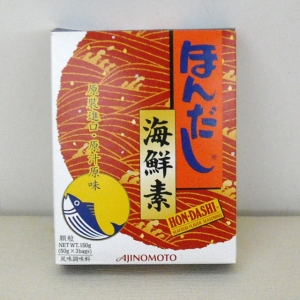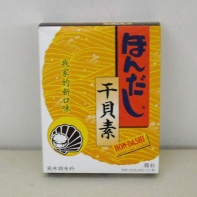(serves 8)
Otak-otak is a terrine-like grilled fish delicacy from South-east Asia, an exotic spicy dish that works as a western appetizer. There are many varieties of Otak-otak from Thailand all the way down to Indonesia; this version is of the Straits Chinese style featuring coconut milk, popular in Singapore and Penang. Otak-otak is usually grilled in banana leaves and contains other ingredients uncommon in the Western kitchen, but I have worked out a modified recipe that resolves these issues.
- White Fish Fillets (500g)
- Yeo’s Minced Prawns in Spices (2x160g tins)
- Coconut Milk (160 ml)
- Onion (0.5)
- Egg (1)
- White Sandwich Bread
- Lemon
- Cucumber
- Sherry
- Lemongrass
- Tarragon
Preparation
- Dice half an onion and pan fry the pieces on low heat in a pan with a dash of oil. When the onion begins to get limp turn up the heat and add the two cans of minced prawn to the pan and continue frying until you see bubbling. Sprinkle on 2t lemongrass and 1t tarragon and transfer the contents of the pan to a large mixing bowl when it has cooled down.
- Make a brine out of 1T salt, 1t sugar, 1T of lemon juice and 2 cups of water. Cut the fish into chunks and put them in the brine them for 20 minutes (and no more). Rinse and place the fish pieces on a tea towel to dry. You can do this concurrently with step 1.
- Cut 2 slices of plain bread into small cubes. If the bread is fresh and the crust is still soft you can keep the crust, otherwise trim the crust off. Pour in 160 ml of coconut milk over the diced bread followed by 1 egg, 1T of sherry and 1t of sugar. Mix well, then add the fish.
- Place a quarter of the fish and bread mixture in a food processor and give it a 2 second pulse (and no more) on low power. Transfer the resulting fish paste to the mixing bowl with the shrimp and onion. You want the fish paste to be coarse but even, so you cannot blend too much at a time. Repeat another three times to use up all the fish and bread. Stir everything in the mixing bowl until you get an even colour.
- Preheat your oven to 150oC (300oF).
- Pour the seafood mixture into a medium sized casserole dish. The casserole dish should be big enough such that the thickness of the seafood is no more than one inch. Cover the casserole dish, if it doesn’t have a cover you can use aluminium foil snugly crimped over the top.

- Place the casserole in the oven. The idea is not so much to bake the fish but to steam it. After 40 minutes, remove from the oven and allow to cool. There will be bulge in the centre initially but this will flatten over time. What you have now is a seafood terrine of sorts.
- When the terrine is cold, and this can be several hours later or even overnight (in the fridge), put it back in the oven, this time uncovered, for twenty minutes at 200oC (390oF). This will boil off most of the free liquid, refine the aroma and give the Otak-otak a nice crust – as shown here.
- While still hot, cut the Otak-otak into slices and serve on untoasted plain white bread with some thin cucumber slices.
Notes
- As the fish is cooked for an extended time, there is no point in using fresh fish. I typically use frozen pangasius fillets myself , they are cheap and readily available, but really any kind of white fish is fine. The important thing is to dry the fish (draining on a colander is insufficient) properly after brining as the Otak will end up too wet if you don’t.
- Yeo’s Minced Prawn in Spices a.k.a. Prawn Sambal is a key ingredient that contains in a single tin every ingredient you need for cooking Otak you won’t find in your kitchen larder. Last time I checked, you can order it from Amazon. Its not the perfect solution, but its better than looking for weird ingredients like candlenut and galangal.
- If you don’t like your food spicy, you can use just one tin of the minced prawn instead of two (the child’s version I call this), but you’ll need to add salt and sugar to compensate.
- To bring your Otak-otak to the next level, you can add chunks of whole seafood. For example you could brine a few scallops along with the fish, dice them and add them in step 6. Canned or bottled clams would work well also. If you bake cakes and have pandan essence around, a few drops will also do wonders.
- Instead of on bread, you can also serve Otak-otak with some white rice cooked with coconut milk.
- The Thai version of Otak-otak has a different name, which is Hor Mok Pla.
















 Known also as Sakura Ebi, Cherry Shrimp or Cherry Blossom Shrimp, these are tiny shrimp caught from a certain bay in Japan, the name of which eludes me at the moment. As you might gather, they are named after cherry blossoms, because of their similar colour. There are may ways to eat Sakura but if you live outside of Japan, you will have to make do with the boiled and then sun-dried variety, which is the variety which I use, and refer to.
Known also as Sakura Ebi, Cherry Shrimp or Cherry Blossom Shrimp, these are tiny shrimp caught from a certain bay in Japan, the name of which eludes me at the moment. As you might gather, they are named after cherry blossoms, because of their similar colour. There are may ways to eat Sakura but if you live outside of Japan, you will have to make do with the boiled and then sun-dried variety, which is the variety which I use, and refer to.